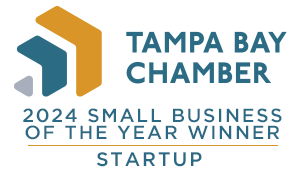Today, they're a $100M company with great market share. Solid margins. And, steady cash flow. Everyone wants a piece.
But, less than a decade ago, they were running on sheer momentum with no financial infrastructure to support their growth. At $30M in revenue, they were operating without reliable financials, struggling through a failed ERP implementation, and relying on an overwhelmed finance team.
In less than two short years, this company doubled in size. And today, stands as a powerhouse. Want to know how they went from operational chaos to financial maturity? Of. Course. You. Do.
The Starting Point: A Company in Crisis
- ERP Failure: The company attempted to roll out an ERP system, but instead of improving efficiency, it created unreliable data and operational bottlenecks.
- Lack of Financial Visibility: Leadership had no clear financials six months after year-end, making strategic decision-making nearly impossible.
- Underdeveloped Finance Team: The company was burdened with a bloated, underqualified team, leading to inefficiencies and inconsistent reporting.
The Transformation: Building a Scalable Financial Foundation
Step 1: Strengthen the Finance Team
A high-growth company needs a high-functioning finance team. The first step was restructuring to ensure the right people were in the right seats.
- Assessed the existing team, identified capability gaps, and restructured roles.
- Hired experienced finance professionals to improve oversight and decision-making.
- Implemented clear accountability measures to streamline financial operations.
Step 2: Establish Reliable Financial Reporting
Without accurate financial statements, leadership was making decisions in the dark. Establishing financial integrity was critical.
- Reconciled historical financials to create a trustworthy baseline.
- Strengthened internal controls to ensure long-term financial accuracy.
- Provided leadership with clear, actionable financial reports.
Step 3: Implement a Consistent Monthly Close Process
Financial reporting delays created uncertainty. A structured monthly close process ensured timely and accurate data.
- Developed a standardized month-end close schedule.
- Implemented reporting timelines to improve financial clarity.
- Ensured leadership had access to real-time insights for informed decision-making.
Step 4: Automate Banking and Cash Management
Manual banking processes slowed down operations and increased the risk of errors.
- Integrated automated bank feeds for efficient reconciliation.
- Improved cash flow management with real-time data.
- Reduced manual errors and administrative workload.
Step 5: Re-Implement the ERP System Correctly
Rather than abandoning the failed ERP implementation, the company took a strategic approach to make it work.
- Diagnosed previous implementation failures and addressed system misconfigurations.
- Reconfigured processes to align with operational needs.
- Trained employees on system use to maximize efficiency.
Step 6: Secure an Unqualified Audit Opinion
For credibility and investor confidence, obtaining an unqualified audit opinion was essential.
- Strengthened financial controls and documentation to meet compliance standards.
- Worked with auditors to ensure financial statements reflected operational realities.
- Successfully secured a clean audit opinion, solidifying credibility with stakeholders.
The Results: A Blueprint for Sustainable Growth
With a stabilized financial foundation, the company shifted from reactive decision-making to proactive, data-driven strategies. The results?
- Revenue Growth: The company scaled from $30M to $60M in just two short years, reaching $100M today.
- Operational Efficiency: Automated banking, structured financial reporting, and a high-functioning ERP system improved overall workflow.
- Scalability: With financial discipline in place, leadership could focus on long-term growth rather than constantly troubleshooting problems.
How to Build a Scalable and Sustainable Business
Growth is exciting, but the financial infrastructure has to be able to support it. Without that, everything falls apart.
Key Takeaways for Success:
- Hire the Right People: A strong, capable finance team is essential for sustainable scaling.
- Prioritize Financial Integrity: Without accurate numbers, business decisions are based on guesswork.
- Leverage Automation: Streamlining manual processes increases efficiency and reduces errors.
- Establish a Strong Financial Foundation: Financial discipline is the backbone of long-term success.
We get it. And, we know, it's not always sexy. Because, scaling a business isn’t just about increasing revenue—it’s about ensuring financial sustainability. A strong financial infrastructure doesn’t just protect against risk; it fuels smart, strategic growth.
Is your company experiencing rapid expansion, but lacks the financial clarity to scale with confidence? The William Stanley CFO Group can help. Our expertise in financial strategy, operational improvements, and scalable solutions has helped companies like this one transition from disarray to disciplined, data-driven growth.
Ready to take your business to the next level? Let’s talk.



